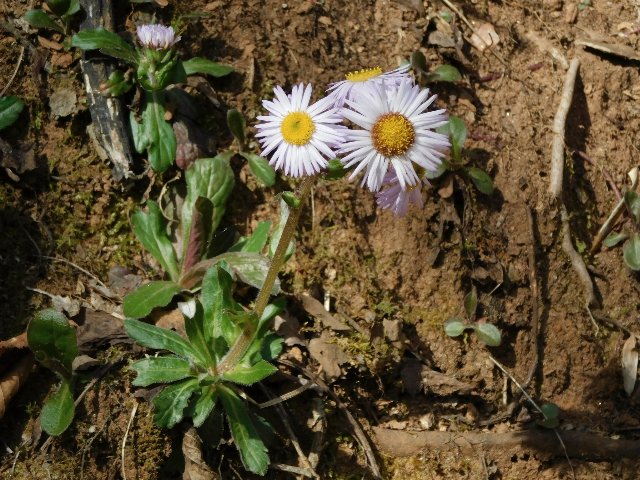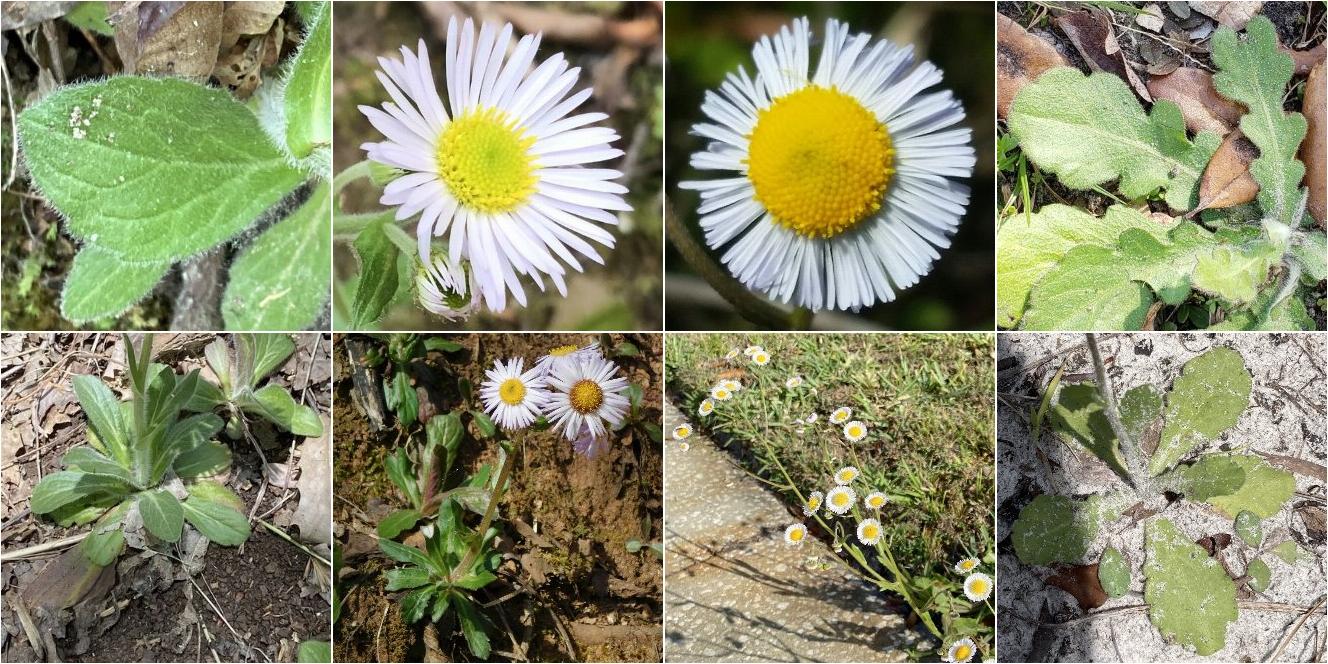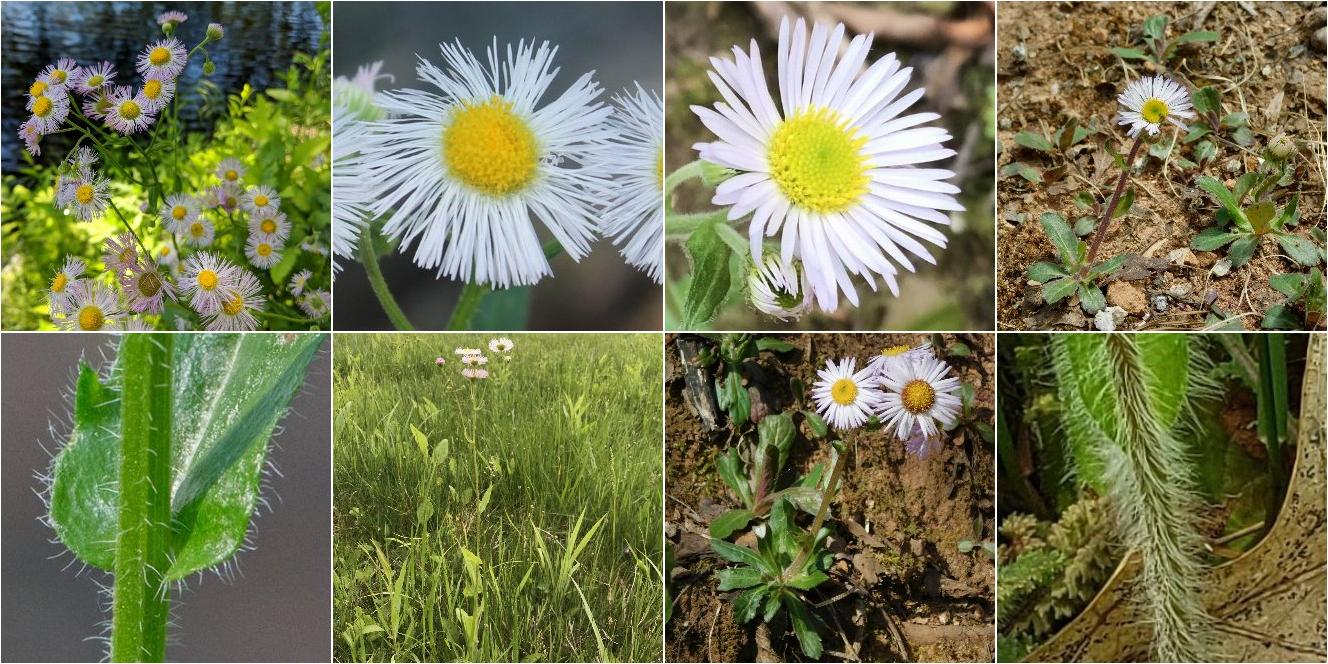Robin's Plantain (Erigeron pulchellus) vs. Oakleaf Fleabane (Erigeron quercifolius)
Updated May 25th, 2023These species are frequently confused in their reported range of overlap, as they have similar growth habits and height. They have little habitat overlap however, and they can be easily distinguished by flowers, growth habit, and basal leaves. E. quercifolius is restricted to the southeastern coastal plain, on sandy, peaty, or occasionally shell rock soils, and is usually found on moist, sunny, disturbed sites. E. pulchellus is predominately a more inland species, ranges onto finer-textured soils, often on slopes, and prefers better-drained, less-disturbed, shadier sites. In the zone of overlap it is most frequent on the upper slopes of riparian forests in areas where streams have dissected the terrain, leading to steeper slopes than is typical in the coastal plain; it is also often more common on calcareous soils, but not restricted to these soils.





